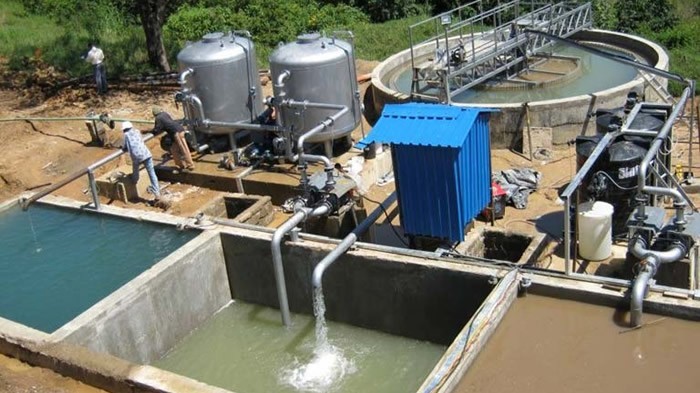Product Details

Effluent Treatment Plant
An Effluent Treatment Plant (ETP) is a facility designed to treat industrial wastewater (effluent) generated from various industrial processes to remove pollutants and contaminants before discharge or reuse. Here's an overview of ETPs, their components, and how they work:
Components of an Effluent Treatment Plant (ETP):
- Inflow:
- Industrial effluent enters the treatment plant through pipes from manufacturing units, industries, or commercial establishments. It contains pollutants specific to the industry (e.g., chemicals, heavy metals, organic compounds).
- Preliminary Treatment:
- Screening: Similar to sewage treatment plants, large objects, debris, and coarse materials are removed using screens and bar racks.
- Grit Removal: Sand, grit, and other heavy solids are settled out or removed mechanically to protect downstream equipment.
- Primary Treatment:
- Equalization: Effluent may be collected in a tank where flow rates and characteristics are stabilized.
- Physical-Chemical Treatment: Chemical coagulants and flocculants may be added to facilitate the settling of suspended solids and enhance pollutant removal.
- Secondary Treatment:
- Biological Treatment: Biological processes like activated sludge, aerobic or anaerobic digestion, or biofiltration are employed to degrade organic pollutants and reduce biochemical oxygen demand (BOD) and chemical oxygen demand (COD).
- Aeration: Oxygen is provided to support aerobic bacteria or other microorganisms responsible for breaking down organic matter.
- Tertiary Treatment:
- Advanced Filtration: Techniques like ultrafiltration, reverse osmosis, or ion exchange may be used for further removal of dissolved solids, heavy metals, or specific contaminants.
- Disinfection: Effluent may be disinfected using methods like chlorination, UV irradiation, or ozonation to kill remaining pathogens.
- Sludge Management:
- Sludge Handling: Similar to sewage treatment, sludge generated from primary and secondary treatment processes is treated (e.g., thickening, dewatering, digestion).
- Disposal or Reuse: Depending on its characteristics, treated sludge may be disposed of or reused beneficially (e.g., as soil conditioner or for energy recovery).
Technologies Used in ETPs:
- Physicochemical Processes: Use of chemicals for precipitation, coagulation, flocculation, and pH adjustment to remove pollutants.
- Biological Processes: Employing aerobic or anaerobic bacteria to break down organic matter and nutrients.
- Membrane Technologies: Such as ultrafiltration (UF), nanofiltration (NF), and reverse osmosis (RO) for advanced filtration and separation.
Environmental and Regulatory Compliance:
- Environmental Protection: ETPs play a crucial role in reducing pollution and protecting natural water bodies from contamination.
- Compliance: Industries must comply with local regulations and discharge standards that limit the concentration of pollutants in effluents to protect public health and the environment.
Benefits of ETPs:
- Resource Conservation: Recovery of water and valuable resources (e.g., metals from wastewater).
- Risk Mitigation: Minimization of environmental risks associated with industrial operations.
- Sustainability: ETPs contribute to sustainable industrial practices by minimizing environmental impact and promoting resource efficiency.
